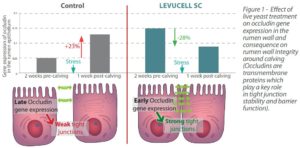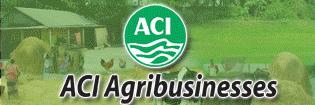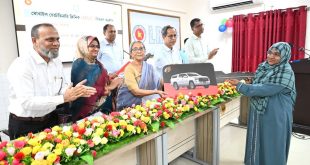 Lallemand, France : In particular, the transition from a high fiber to a high non-fiber carbohydrate diet represents important challenges for rumen health with negative impact on inflammatory status.
Lallemand, France : In particular, the transition from a high fiber to a high non-fiber carbohydrate diet represents important challenges for rumen health with negative impact on inflammatory status.
Using endoscopy and quantitative RT-PCR as an innovative approach to rumen health, the team of Alex Bach (IRTA, Spain), and Lallemand Animal Nutrition conducted a study at the Blanca experimental farm on the impact of transition challenge on rumen health and the effects of live yeast Saccharomyces cerevisiae CNCM I-1077 (LEVUCELL SC) at rumen wall gene expression level1. Here are some highlights and key findings.
Using a medical endoscope, the researchers could biopsy rumen and colon epithelium and study histological and immune-related gene expression changes during diet transition. The trial was conducted on 21 Holstein dairy cows from 21 days before calving to 21 days after calving. Major conclusions on S. cerevisiae CNCM I-1077 effects in transition dairy cows :
The rumen wall barrier integrity is better prepared to face the stress of diet transition (Fig. 1).
The rumen wall is better prepared and more resistant to LPS and inflammatory challenges related to diet changes. The inflammatory status of the rumen wall was lower with the live yeast as compared to control cows around calving (reduced Il10 gene expression post calving, increased pre-calving).
These benefcial outcomes on rumen health needed endoscopy and gene expression analysis to be seen and understood. However, they were visible at the farmer’s level: milk yield and feed intake were also significantly improved.
– From a publication by A. Bach et al., J Dairy Sci. 2018
 Agrinews24 কৃষির সাথে, কৃষকের পাশে
Agrinews24 কৃষির সাথে, কৃষকের পাশে





















